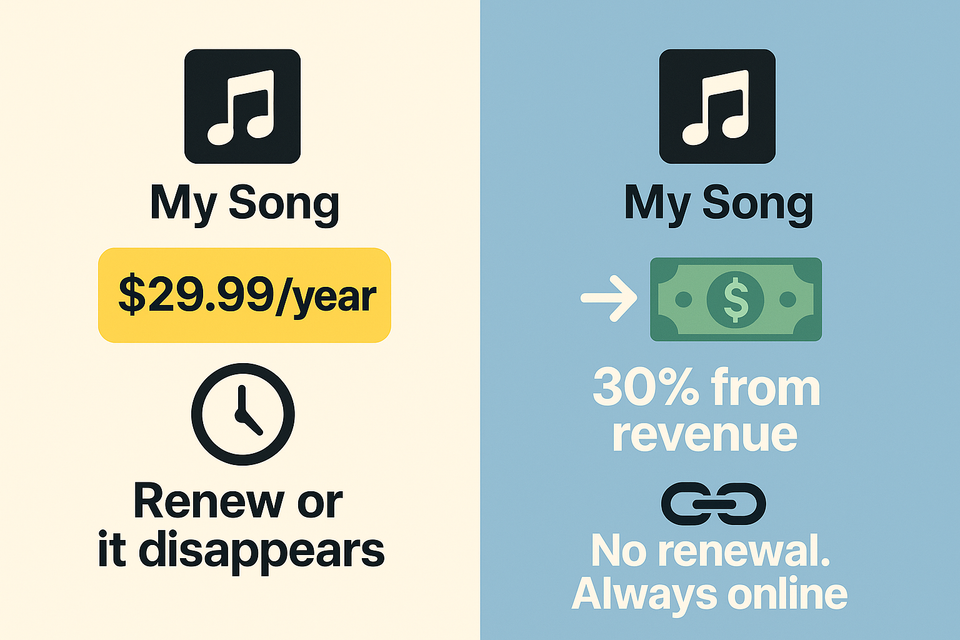Flat-Fee vs. Royalty-Based Distribution: Why “Cheap” Often Becomes Expensive Over Time

Digital music distribution may seem straightforward: you pay a yearly fee, upload your tracks, and they appear on platforms like Spotify, Apple Music, and others. Many services advertise exactly this model—you pay a fixed amount and can release as much music as you want. But what seems fair and simple at first can turn into a problem over time, especially for active labels and ambitious independent artists.
In a flat-fee model, you pay an annual amount—usually somewhere between $25 and $90—depending on how many artists or releases you want to manage. Larger setups often require multiple accounts, especially when handling multiple artists. While you keep 100% of your royalties, your releases only stay online as long as you continue to pay each year. If you stop renewing, your music disappears. Support is usually limited or automated. Additional services—like monetization on video platforms or access to specialized stores—are typically not included or only available through expensive add-ons.
In contrast, a royalty-based model charges nothing upfront. The distributor takes a percentage of your actual earnings—usually between 20% and 30%. That means you only pay if your music is generating income. In return, you often gain access to additional tools, personal support, and the assurance that your releases will remain online—even if you stop actively managing them for a while.
For labels with many artists or a high release volume, the flat-fee model quickly becomes inefficient. Imagine a label managing 150 artists and a few hundred songs. Even if you group artists under shared accounts, you’d need dozens of subscriptions. At around $75 to $90 per account, that means paying thousands of dollars every year just to keep the catalog live. And that’s without factoring in costs for optional features, the manual work of managing renewals, or the risk of releases disappearing if one payment is missed.
With a royalty-based model, none of these upfront payments exist. If the label earns, say, €3,000 per month through streaming and downloads, a 30% distribution fee would result in annual costs of around €10,800—but those costs are deducted directly from the revenue. There’s no cashflow burden, no risk of accidental takedowns, and no spreadsheet full of account passwords and expiry dates. The cost scales with success—not with artist count or release volume.
And it’s not just labels who face these challenges. Even solo artists can run into trouble with flat-fee models. Many pay their annual fee, release a track, and then forget to renew. The song disappears. Or maybe the song only earns $12 in a year, but the artist is paying $25 to keep it online. Over time, this results in real losses—even if everything else seems “done right.”
Once you begin releasing more often, or if you want to monetize on video platforms, manage publishing rights, or appear on niche platforms, these low-cost models start to fall short. You then need structure, guidance, and a distribution partner that doesn’t just deliver your music, but helps you manage it strategically.
Summary
In the end, flat-fee models are only a good deal if you release very little and stay constantly engaged. But for anyone planning to grow, maintain a serious catalog, or manage multiple artists, royalty-based distribution offers more security, more professionalism, and—quite often—lower long-term costs.
Because those who only look at the price tag often realize too late that uploading was never the real challenge. What matters is what happens after your music goes live—and whether it stays there.
NexaTunes – structured support for independent releases.
Get in touch for more information using our livechat
